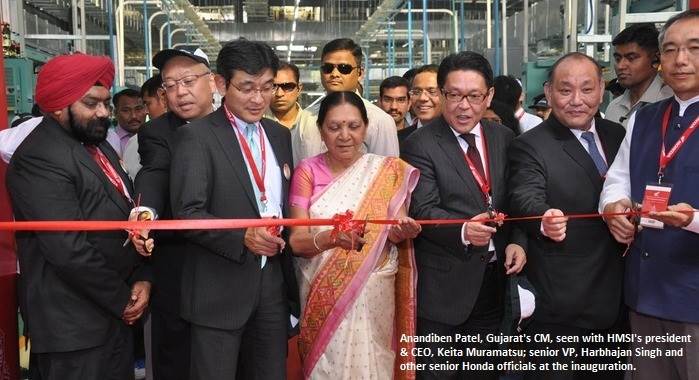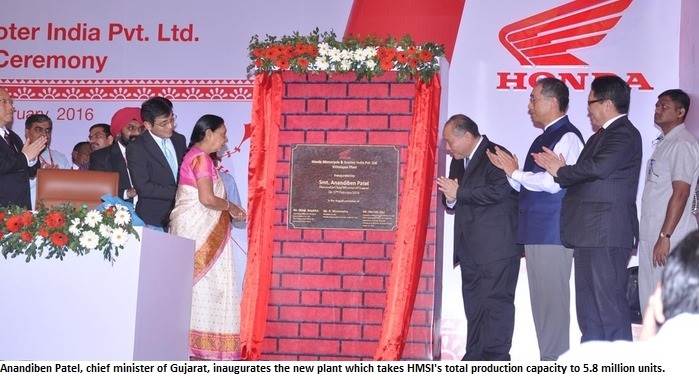Honda Motorcycle & Scooter India (HMSI) inaugurated its new manufacturing plant in Vithalapur, Gujarat on February 17, 2016. The new scooter-making facility, which is the largest in the world, is part of a strategic plan to further bolster the company’s hold on the domestic scooter market.
Spread over 250 acres, the 1.2 million scooters per annum plant will see operations come up in two phases. The first production line of 6,00,000 units per annum will be followed by a second line with a similar volume by mid-2016. With this, HMSI’s total production capacity will stand at 5.8 million units:1.6 million units at Plant 1 (Haryana), 1.2 million units at Plant 2 (Rajasthan), 1.8 million units at Plant 3 (Karnataka) and another 1.2 million units at Plant 4 (Gujarat).
Honda, along with its suppliers have invested around Rs 2,200 crore in the new plant, which will generate around 9,000 new jobs in Gujarat. Of this, Honda’s investment is Rs 1,100 crore and direct employment of 3,000 workers. The 22 existing and new component suppliers have set-up manufacturing facilities in Gujarat, investing a similar Rs 1,100 crore and creating 6,000 jobs in their plants.
According to HMSI, the Gujarat plant has many firsts. It is Honda’s first two-wheeler plant worldwide where the entire press shop will be fully automated and operated by robots, at all times. Also, for the first time in its Indian two-wheeler operations, Honda has introduced vacuum cooling technology and nitrogen pressurisation in die-casting, use of digital eye technology in various processes and traceability of in-house parts with QR codes in the machine shop.
The new plant is also as environment-friendly as it is technologically advanced. Over one-third of the total plant area is a dedicated green zone. It is the first Honda two-wheeler plant to introduce an Integrated Zero Liquid Discharge Facility which the company says is “closely aligned to Honda’s 3R principle of – Reduce, Reuse and Recycle.”
In addition, maximum natural lighting and ventilation coupled with adoption of LED lights proactively reduces energy consumption during production. Honda is also considering establishing an internal rain harvesting system at the facility.




Comments
Member Login
Personal Details
No comments yet. Be the first to comment.